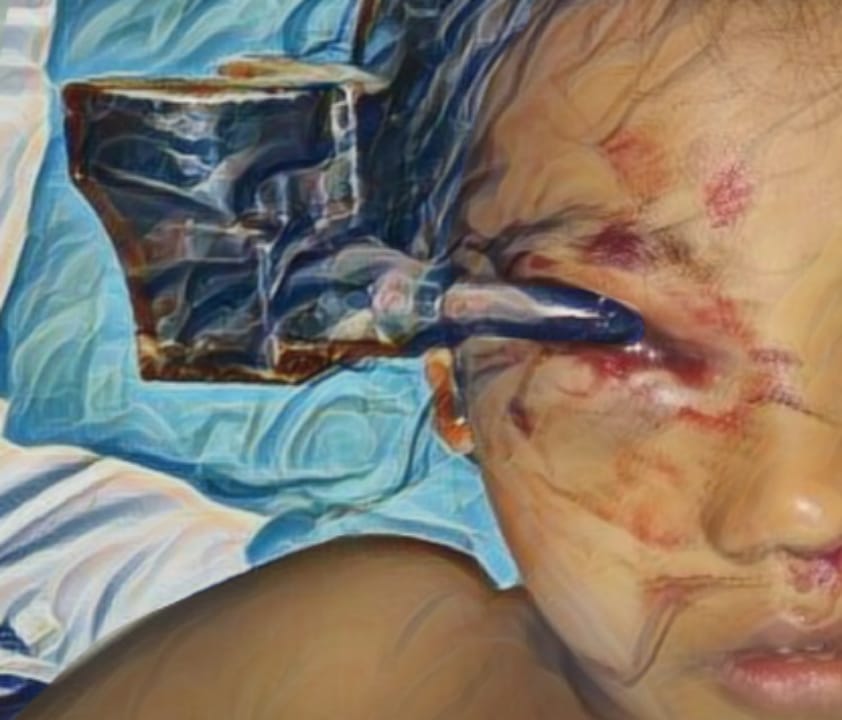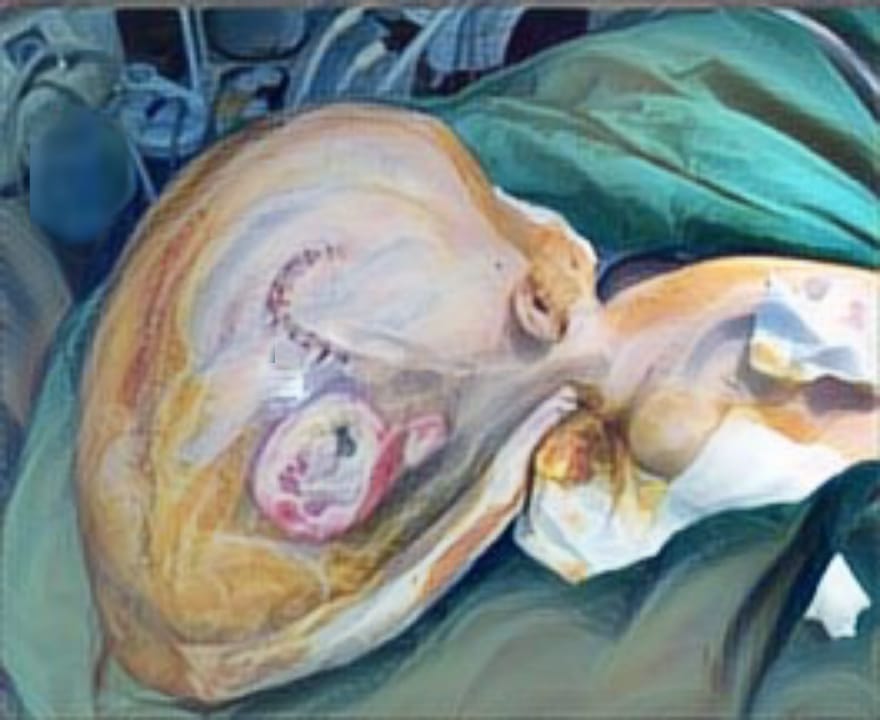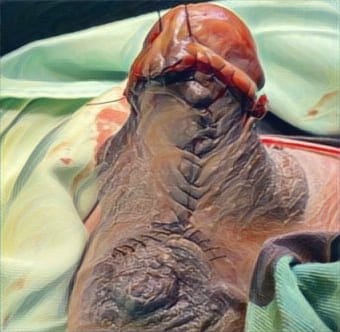PEDIATRIC OCULAR TRAUMA MANAGEMENT: A CASE STUDY OF EFFECTIVE INTRA-ORBITAL FOREIGN BODY IOFB EXTRACTION

Downloads
Highlights:
- The rare nature of Orbitocranial Injury with Intraorbital Foreign Body (IOFB).
- Utilizing a 3D Head CT Scan to ascertain the precise location of the IOFB and its impact on anatomical structures is pivotal in shaping immediate treatment strategies, thereby reducing the potential for complications.
Abstract:
Introduction: Penetrating intraorbital foreign body (IOFB) injuries are a rare form of traumatic injury. Recognized as a surgical emergency, meticulous history-taking and a thorough examination are essential for determining the trauma's mechanism and cause, facilitating accurate diagnosis and effective disease management.
Case Illustration: In the emergency room, a 5-year-old female patient was presented with a craniofacial injury resulting from an IOFB. An evacuation procedure, conducted through a subsidiary incision, was performed to extract the foreign body. Interestingly, the object removed from the orbital cavity was a plastic foreign body, initially suspected to be a fractured orbital bone.
Discussion: The clinical presentation, management, and outcomes of orbital foreign body injuries can differ based on the material composition of the foreign body. In cases of intraorbital foreign body trauma, the primary treatment goal is foreign body removal.
Conclusion: Precise and accurate initial management in the emergency department is crucial. Early diagnosis, aided by a 3D head CT scan, is instrumental in locating the IOFB and identifying the involved anatomical structures. This, in turn, enables timely treatment decisions to minimize the risk of complications.
Shaheen A, Hudson J, Read S, et al. Pediatric Intraocular Foreign Body Management. In: Pediatric Vitreoretinal Surgery. Cham: Springer International Publishing, pp. 673–686.
Brophy M, Sinclair SA, Hostetler SG XH. Pediatric eye injury-related hospitalizations in the United States Pediatrics. 2006; 117: e1263–71.
New Vision Problems in the U.S. Report-Prevent Blindness., https://preventblindness.org/new-vision-problems-in-the-u-s-report/.
Mirzaei F, Salehpour F, Shokuhi G, Asvadi Kermani T, Salehi S PS. An unusual case of intra orbital foreign body; diagnosis, management, and outcome: a case report. BMC Surg; 19, https://www.ncbi.nlm.nih.gov/Pmc/Articles/PMC6611006/ (2019).
Zuluaga-Orrego CA, Caicedo-Montaño CA, Alba-Bernal MP EA. Pediatric ocular trauma: intraorbital foreign body. Case report. Case Rep 2019; 5: 4–10.
Jabang JN, Dmpha L, Sayang B, Roberts CA CB. Management of a large intraorbital wooden foreign body: case report. Surg Neurol Int, https://surgicalneurologyint.com/Surgicalint-Articles/Management-Of-A-Large-Intraorbital-Wooden-Foreign-Body-Case-Report/.
J L, Lp Z, J J HY. Clinical diagnosis and treatment of intraorbital wooden foreign bodies. Chin J Traumatol Zhonghua Chuang Shang Za Zhi 2016; 19: 22–25.
Pandey AN. Ocular Foreign Bodies: A Review. J Clin Exp Ophthalmol; 8, https://www.omicsonline.org/Open-Access/Ocular-Foreign-Bodies-A- Review-2155-9570-1000645.Php?Aid=89017 (2017).
Boncoeur-Martel MP, Adenis JP, Rulfi JY, Robert PY, Dupuy JP MA. CT appearances of chronically retained wooden intraorbital foreign bodies. Neuroradiology 2001; 43: 165–168.
You YY, Wang XH, Cheng SN, Zhu R, Wang BW, Li S JF. Clinical analysis of 96 patients with intraorbital foreign bodies: a 10-year retrospective study. Front Med 2022; 9: 1018905.
Singh S, Sharma B, Kumar K, Dubey A AK. Epidemiology, clinical profile and factors, predicting final visual outcome of pediatric ocular trauma in a tertiary eye care center of Central India. India Indian J Ophthalmol 2017; 65: 1192–7.
Thompson CG, Kumar N, Billson FA MF. The aetiology of perforating ocular injuries in children. Br J Ophthalmol 2002; 86: 920–2s.
Ng TC GP. A Patient With An Inert Intraocular Foreign Body. Cureus; 11, https://www.ncbi.nlm.nih.gov/Pmc/Articles/PMC6825440/ (2019).
Fulcher TP, McNab AA ST. Clinical features and management of intraorbital foreign bodies. Ophthalmology 2002; 109: 494–500.
Burgueño Montañés C, Colunga Cueva M, González Fernández E, Cienfuegos García S, Díez-Lage Sánchez A DM. Eye injuries in childhood An Esp Pediatr. 1998; 48: 625–630.
Maneksha V, Setty K, Saseendran N. Paediatric injury- A case report. TNOA J Ophthalmic Sci Res 2023; 61: 108.
Shullai W, Natung T, Lynser D TT. A challenging case of a large intraorbital foreign body perforating the nasal septum in a child. Indian J Ophthalmol 2018; 66: 1511.
Damm A, Lauritsen Aí˜, Klemp K NR. Transorbital impalement by a wooden stick in a 3-year-old child. BMJ Case Rep 2015; 2015211885.
Li J, Zhou LP, Jin J YH. Clinical diagnosis and treatment of intraorbital wooden foreign bodies. Chin J Traumatol 2016; 19: 322–325.
Khanam S, Agarwal A, Goel R, Rathie N, Raut A, Raghav S, Kumar S, Chhabra M, Singh S KS. Clinical presentation and management strategies in intraorbital foreign bodies. Case Rep Ophthalmol Med 2021; 6645952.
Behera SK, Panigrahi S, Mishra SS SS. Transorbital penetrating brain injury by a wooden stick: a neuro-ophthalmologic emergency. Asian J Neurosurg 2016; 11: 321–322.
You YY, Shi BJ, Wang XY, Chen J, Wang ZR, Wang XH JF. Intraorbital wooden foreign bodies: case series and literature review. Int J Ophthalmol 2021; 14: 1619–1627.
Daniel H, Irawati Y, Wibowo NP, Paramita C, Wardani RS SN. Early versus delayed extraction of intraorbital wooden foreign body. Trauma Case Rep 2022; 38: 100629.
Shelsta HN, Bilyk JR, Rubin PAD, Penne RB CJ. Wooden intraorbital foreign body injuries: clinical characteristics and outcomes of 23 patients. Ophthalmic Plast Reconstr Surg 2010; 26: 238–244.
Pandit K, Sitaula S, Shrestha GB, Joshi SN CM. Management of unusual missed diagnosis of a intra-orbital wooden foreign body: a case report and review of literature. Ann Med Surg 2022; 79: 104017.
Sahu SK, Mishra P KA. Missed intra-orbital wooden foreign body. Cureus 2022; 14: e22078.
Ben Abdessalem N, Zaafrane N, Jabri A et al. A challenging case of an intraorbital foreign body in a child: a case report. Ann Med Surg 2022; 76: 103471.
Chai G-R, Song Z-X, Liu L. Clinical features, radiological imaging, and treatment strategies of nonmetallic intraorbital foreign bodies: a retrospective analysis. Int J Ophthalmol 2023; 16: 1130–1137.
Rowlands MA EM. Management of intraorbital foreign bodies. Am Acad Ophthalmol.
Black EH, Nesi FA, Calvano CJ et al. Ophthalmic Plastic And Reconstructive Surgery. Springer, http://link.springer. com/10.1007/978-1-4614-0971-7 (2012).
Xu K AD. Intraocular Foreign Bodies. C Can Med Assoc J 2017; 189: E163.
Gise R, Truong T, Parsikia A MJ. A comparison of pediatric ocular injuries based on intention in patients admitted with trauma BMC Ophthalmol. 2019; 19: 37.
Copyright (c) 2024 Doni Setiawan, Liesa Z. Subuh, Alexandria Stephanie Suparman, Yugos Juli Fitra

This work is licensed under a Creative Commons Attribution-ShareAlike 4.0 International License.
JURNAL REKONSTRUKSI DAN ESTETIK by Unair is licensed under a Creative Commons Attribution-ShareAlike 4.0 International License.
- The journal allows the author to hold copyright of the article without restriction
- The journal allows the author(s) to retain publishing rights without restrictions.
- The legal formal aspect of journal publication accessbility refers to Creative Commons Attribution Share-Alike (CC BY-SA)



















